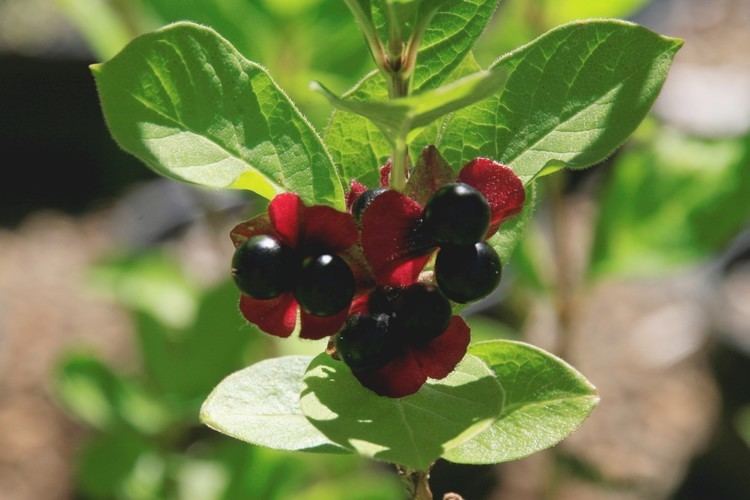Scientific name Lonicera involucrata Rank Species | Genus Lonicera Higher classification Honeysuckle | |
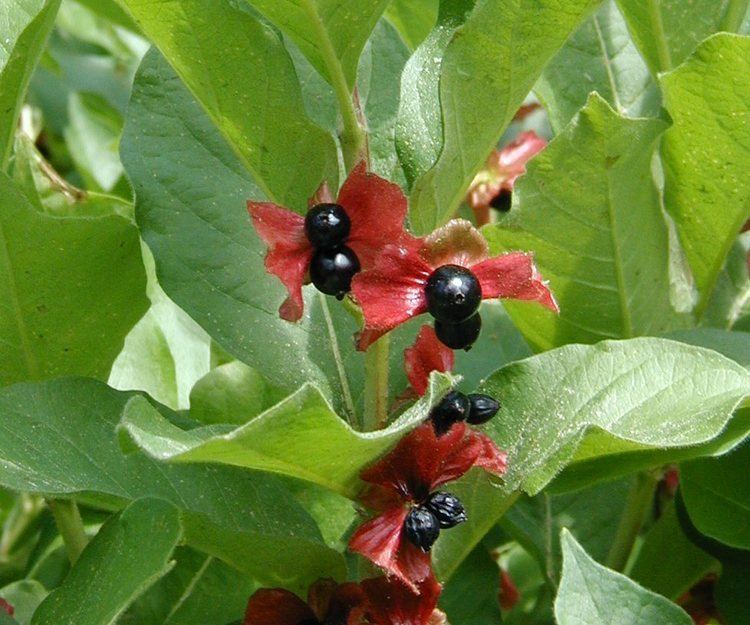 | ||
Similar Honeysuckle, Caprifoliaceae, Lonicera tatarica, Lonicera ciliosa, Lonicera utahensis | ||
Lonicera involucrata
Lonicera involucrata (bearberry honeysuckle, bracted honeysuckle, twinberry honeysuckle, Californian Honeysuckle, twin-berry, black twinberry) is a species of honeysuckle native to northern and western North America, from southern Alaska east across boreal Canada to Quebec, and south through the western United States to California, and to Chihuahua in northwestern Mexico. It grows at elevations from sea level to 2,900 m.
Contents
- Lonicera involucrata
- Twinberry lonicera involucrata blooms fruit and otherwise useful for id
- Cultivation and uses
- References
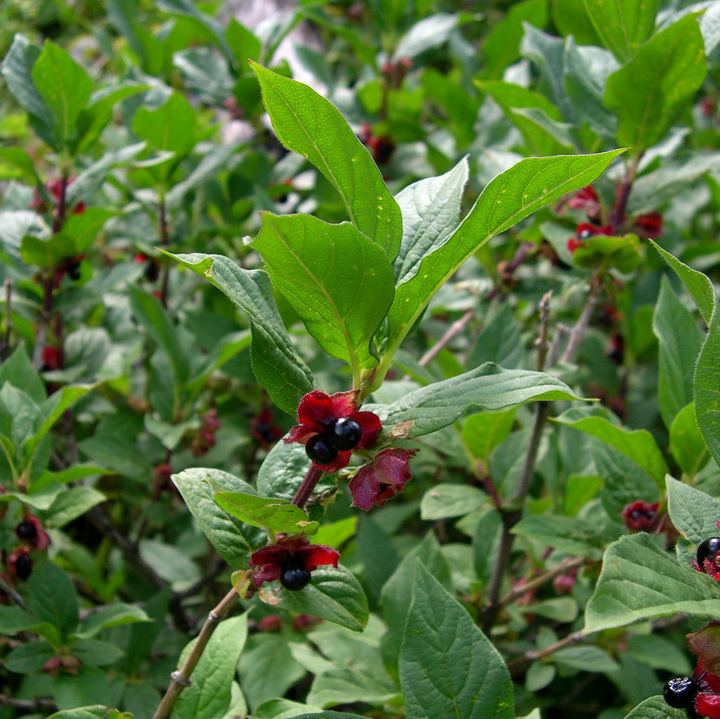
It is a large shrub that can grow 0.5–5 m high, with shoots with a quadrangular cross-section. The leaves are elliptic, to oval-shaped, 3–16 cm long and 2–8 cm broad; they are hairy along the margins and on the underside, and have a distinctive abruptly acuminate tip. The flowers are yellow, tubular, hairy, 1–2 cm long, and are monoecious; they are produced in pairs subtended by a pair of reddish basal bracts 2–4 cm across. The fruit is a 6–12 mm diameter black berry containing several small seeds;
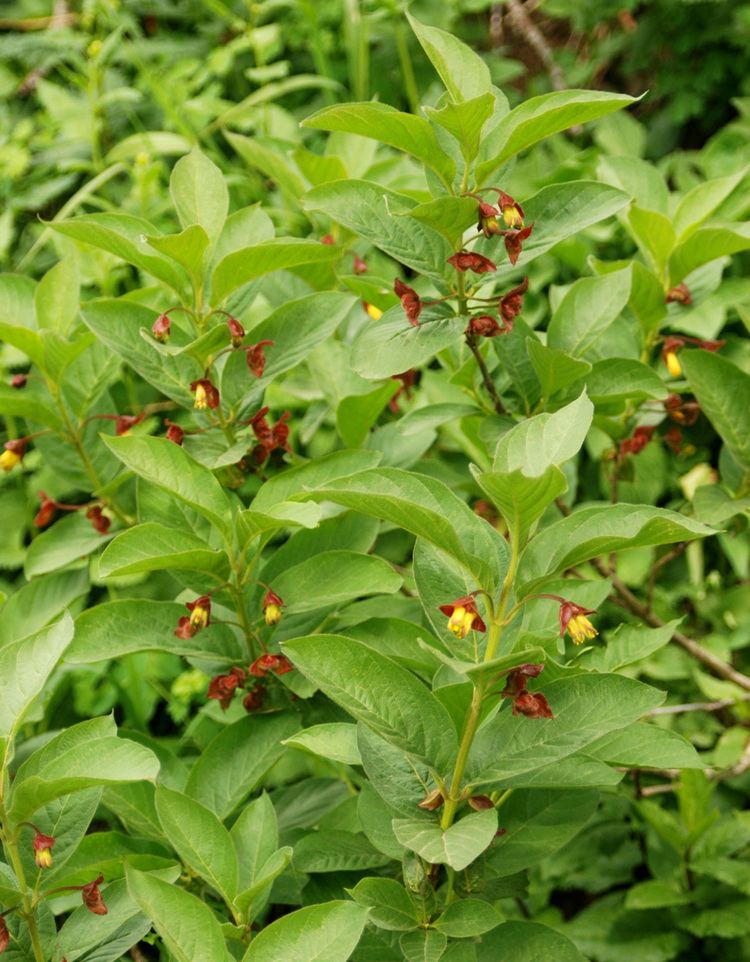
There are two varieties:
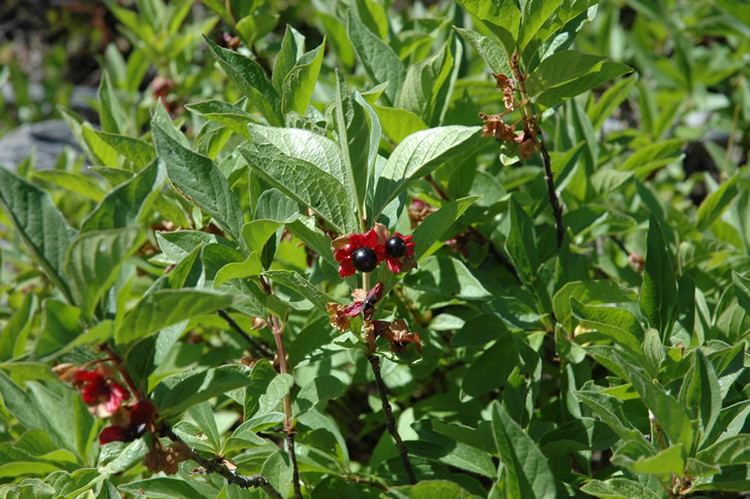
Twinberry lonicera involucrata blooms fruit and otherwise useful for id
Cultivation and uses
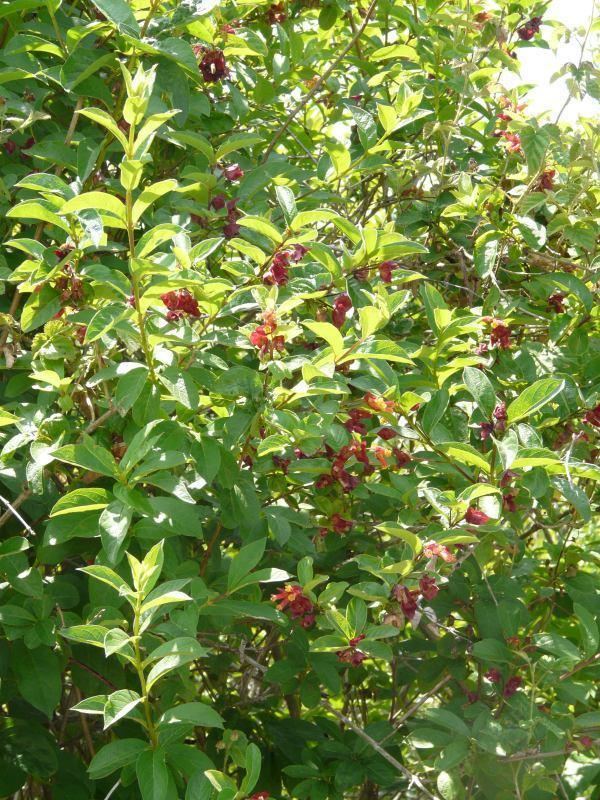
It is often used as an ornamental plant. It is resistant to air pollution, and can be kept in a large garden. It may be edible or very unpalatable, or even poisonous.

